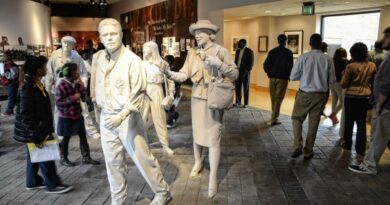The Bear Brook Murders in Allenstown New Hampshire
The Bear Brook Murders, also known as the Allenstown Four, are one of the most chilling and perplexing cold cases in American history. In 1985, two barrels were discovered in Bear Brook State Park, Allenstown, New Hampshire, each containing the remains of unidentified victims. Over the next three decades, painstaking investigative work led to the identification of three of the four victims and their killer. Despite these breakthroughs, many unanswered questions remain. This article delves into the timeline, investigation, and resolution of this horrific case, shedding light on the tragic story of the Allenstown Four.
The Discovery of the First Barrel in Bear Brook State Park
The Bear Brook murders were first uncovered on a cold November day in 1985. A hunter walking through Bear Brook State Park stumbled upon a large metal barrel in a wooded area. Inside, police discovered the decomposing remains of two victims: an adult woman and a young girl, both wrapped in plastic. Their identities were unknown, and with few leads, the case quickly grew cold.
The condition of the bodies and the lack of identification left investigators with many questions. Who were these women, and why had they been murdered and discarded in such a remote area? For years, the answers to these questions remained elusive, and the case slipped from the forefront of public attention.
The Shocking Discovery of the Second Barrel in 2000
In a shocking turn of events, nearly fifteen years after the discovery of the first barrel, a second barrel was found just 100 yards away from the original site in May 2000. Inside, police found the remains of two more young girls. Like the first victims, these children were also wrapped in plastic and left in the same manner. This discovery reignited interest in the case and further deepened the mystery.
Investigators now faced an even more gruesome reality: a total of four unidentified victims, all found in close proximity in the same state park. Despite renewed efforts, including widespread media coverage and updated forensic techniques, authorities were still unable to identify the victims or the perpetrator. The case of the Allenstown Four remained unsolved, and the victims nameless, for many more years.
Breakthroughs in the Case: The Role of DNA Technology
In the early 2000s, DNA technology began to play a significant role in advancing the investigation of the Bear Brook murders. Forensic testing revealed that the woman found in the first barrel and two of the children were maternally related—either her daughters or other close relatives. The third child, found in the second barrel, was not related to the other three victims, adding another layer of complexity to the case.
As the years passed, genealogical DNA testing emerged as a powerful tool in criminal investigations. This breakthrough technique would eventually be key to solving the Bear Brook murders. In 2017, investigators used genetic genealogy to link the unidentified victims to potential relatives, a major turning point in the decades-old case.
Terry Peder Rasmussen: The Chilling Discovery of the Killer
In 2017, investigators made a groundbreaking discovery that tied the Bear Brook murders to a man named Terry Peder Rasmussen. Rasmussen, a drifter and convicted felon, was linked to the case through DNA analysis. His criminal record was extensive, and he was known for using multiple aliases, including “Bob Evans” and “Curtis Kimball.” Rasmussen was eventually revealed to be the killer responsible for the Allenstown Four murders.
Rasmussen had been living in New Hampshire under the name “Bob Evans” in the late 1970s and early 1980s, the same time the murders likely took place. He worked as an electrician at a nearby mill and had a relationship with a woman named Denise Beaudin, who also went missing in 1981 and whose body has never been found. It was later discovered that the unidentified child in the second barrel was Rasmussen’s biological daughter, born to an unknown mother. The other victims, the woman and two children in the first barrel, had been killed by Rasmussen as well, though their exact relationship to him remains unclear.
Rasmussen died in 2010 while serving a prison sentence in California for a different murder, meaning he never faced justice for the Bear Brook killings. Despite this, his identification as the killer brought some measure of closure to the case.
The Identification of the Victims: A Family Torn Apart
While Rasmussen’s role in the murders was eventually confirmed, identifying the victims remained a challenge. In 2019, three of the victims were finally identified as Marlyse Elizabeth Honeychurch and her two daughters, Marie Vaughn and Sarah McWaters. Honeychurch, born in California, had disappeared with her daughters in 1978 after becoming involved with Rasmussen. They were last seen at a family gathering in California, where Honeychurch introduced Rasmussen as her boyfriend. Soon after, the three vanished.
For over 40 years, Honeychurch’s family had no idea what had happened to her and her daughters. The identification of their remains, made possible through genetic genealogy, provided long-awaited answers to their family and brought some resolution to a decades-long mystery.
However, the fourth victim, Rasmussen’s biological daughter, remains unidentified. The identity of her mother is also unknown, leaving some elements of the Bear Brook murders still unresolved.
The Role of Forensic Genealogy in Solving Cold Cases
The Bear Brook murders have become a landmark case in the use of forensic genealogy to solve cold cases. Genetic genealogy combines traditional genealogical research with DNA testing to identify unknown individuals by linking them to relatives who have submitted their DNA to public databases. This technique was also famously used to capture the Golden State Killer in 2018.
In the Bear Brook case, investigators worked with genealogist Barbara Rae-Venter, who played a crucial role in identifying Rasmussen and his victims. The case is a powerful example of how advanced technology and persistence can lead to breakthroughs in even the most difficult investigations.
The Legacy of the Bear Brook Murders
The Bear Brook murders have had a lasting impact on both the families of the victims and the wider community. For decades, the people of Allenstown lived in the shadow of this horrifying mystery, unsure of who was responsible for the brutal killings that had taken place in their backyard. The eventual identification of the killer, and most of the victims, brought some degree of relief to those who had followed the case for so long.
The case also highlighted the importance of cold case investigations and the incredible power of modern forensic techniques. The advancements in DNA technology that helped solve the Bear Brook murders have been applied to many other cold cases, giving hope to families who have spent years seeking answers.
Ongoing Mysteries and Unresolved Questions
Despite the progress made in solving the Bear Brook murders, significant questions remain. Who was the mother of Rasmussen’s daughter? How did Rasmussen, a man with a long and violent criminal history, manage to evade justice for so long? And why did he choose to murder Honeychurch and her daughters, as well as his own child?
Additionally, while Rasmussen is believed to be responsible for the murders of the Allenstown Four, investigators continue to examine whether he may have been involved in other unsolved cases. Given his transient lifestyle and history of using aliases, it is possible that Rasmussen had more victims across the country.
The Bear Brook Podcast: Bringing the Story to a Wider Audience
The Bear Brook murders gained widespread attention through the podcast Bear Brook, produced by New Hampshire Public Radio. The podcast, released in 2018, provided an in-depth look at the case, from the initial discovery of the barrels to the breakthroughs in DNA testing that ultimately solved the case. It also highlighted the emotional toll the case took on the victims’ families and the investigative team that spent decades trying to identify the victims and their killer.
The podcast played a significant role in raising public awareness of the case and helped to demonstrate the potential of forensic genealogy in solving cold cases. It brought the story of the Allenstown Four to a national and international audience, ensuring that the victims and their families would not be forgotten.
Conclusion
The Bear Brook murders, also known as the case of the Allenstown Four, stand as one of the most haunting cold cases in American history. After more than three decades of mystery, advancements in DNA technology and genealogy finally brought answers to the question of who committed these horrific murders and, for some of the victims, provided their long-lost identities. While the case is not fully resolved, the story of the Allenstown Four serves as a powerful reminder of the perseverance of law enforcement, the impact of technology, and the lasting pain caused by senseless violence.
Discover more from City Towner
Subscribe to get the latest posts sent to your email.




